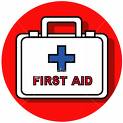|
|
Financial Information Programs that provide design and financial help can make the difference in getting a ramp or steps installed or continuing to do without safe and easy access to your home. This section has information about finding the resources needed to get your ramp or steps built. This list is not comprehensive but is intended to provide ideas to help people get started in their search. How Much Will It Cost? How much a ramp or step will cost depends on how long the ramp has to be or how many step risers are needed to get into your home. Please review the DESIGN OVERVIEW and SAFETY ADVISORY in the manual before deciding on the final layout of your ramp or steps. Once you have determined the layout, you can figure out how much lumber and hardware will be needed. Lumber yards and building supply stores can then give you an estimate. It is important to work closely with the funding organization and with the people who will install the ramps or steps to insure you obtain a structure that is safe and meets your needs as well as possible. "Remember who the user will be, it won't be the builder." Where To Get Information Centers for Independent Living, local non-profit organizations that provide a variety of Independent Living services for people with disabilities, are likely to have information about access modification resources. Contact the National Independent Living Council at 703-525-3406 to locate a center near you. Another way to locate a center is to visit www.ncil.org which has a state by state list of centers. Choose Main and scroll down to the ILC directory. The yellow pages directory and the government section of your phone book is another information resource for your area. In the yellow pages, look under categories such as Social Service Organizations, Human Services Organizations, Disabled Persons Assistance, and Services for Seniors. In the government section look for the state and county human services agencies, as well as the local building officials office. Many of the resources in this section will be listed in the phone book. Local Building Officials can provide valuable information regarding permit and zoning requirements for modifications to homes. They are usually located in the inspections or building permits office of city government. State and Area Agencies on Aging are a good information source for local programs that assist seniors with services including home modifications. The Department of Health and Human Services Administration on Aging web site has a state directory available at www.aoa.dhhs.gov/agingsites/state.html Local and national offices of disability specific organizations such as - Amputee Coalition of America www.amputee-coalition.org - Multiple Sclerosis Society www.nationalmssociety.org/mycommunity/index.asp - Muscular Dystrophy Association www.mdausa.org - National Spinal Cord Injury Association www.spinalcord.org and others may have information or assistance available. Local hospitals, rehabilitation facilities and medical equipment supply companies may have staff who are familiar with resources in your area. Specific Programs that may fund ramps and steps The following are several federal and state programs that can provide assistance. Most have eligibility requirements and it is important to make sure all of the required paperwork has been completed before ramp or step installation is started. Department of Housing and Urban Development (HUD) Community Development Block Grant Program (CDBG) and Home Investment Partnership Program (HOME) Their web page www.hud.gov has a large amount of information available. City or County Community Development Agencies or Housing Redevelopment Authorities may manage CDBG and HOME programs in your area or they will know who does. These programs are excellent resources for moderate and low income individuals and for programs that want to provide home modification assistance to people in their communities. The U.S Department of Agriculture Rural Development has Section 504 Loans and Grants that can be used for accessibility modifications and to repair homes. The objective of the program is "to help very low income owner occupants of modest single family homes in rural areas repair those homes." Grants are possible for homeowners age 62 and over who qualify financially. State office location information is at www.rurdev.usda.gov/recd_map.html The Veterans Administration Home Improvement/Structural Alteration (HISA) program can provide assistance for qualified veterans. Call a VA hospital or veterans assistance organization for more information. State Housing Finance Agencies, Authorities or Corporations. These programs are called different things in different states. About one fourth of these state agencies have programs that provide assistance for access modifications to single family homes. Home and Community-Based Waiver Programs administered by county medical assistance or services programs may pay for modifications for those who are eligible. Check with your county about eligibility requirements The State Vocational Rehabilitation Program may assist eligible individuals with home accessibility modifications, if the modifications are needed for getting and maintaining employment. Community Resources Building contractors can usually build ramps and steps, but do not assume they are familiar with proper access design. It is important to communicate your needs and wishes to the builder and it is appropriate to give them the information in the design chapter of the "How to Build Ramps" manual. If you want to have a modular ramp or steps installed, you can ask the contractor to use the plans from the manual. Community service organizations can also use the plans in "How to Build Ramps" to install ramps and steps. There are many groups that may volunteer to build ramps and steps for people. Some of them are: - Thrivent Financial for Lutherans www.thrivent.com (look for specific language to ask a local chapter for funding for "hands-on" care in community projects). - TelecomPioneers (Telephone Pioneers of America) www.telephone-pioneers.org - Ambucs www.ambucs.com - Civitan International www.civitan.org - Habitat for Humanity www.habitat.org - Veterans of Foreign Wars www.vfw.org - Connect America movement founded by Points of Light Foundation www.pointsoflight.org - Jaycees www.usjaycees.org - Lions www.lionsclubs.org Church organizations, colleges, vocational schools and high schools may have community service programs that could provide volunteers, as well. Lumber yards and building supply stores can be approached for donations of lumber and supplies. Building your own ramp or stairs can be a choice if 3 or 4 people with basic carpentry skills are available. The plans contained in "How to Build Ramps" can be used by any one with basic skills. A 30 minute video, "Tips for Building Modular Ramps and Steps" that demonstrates many of the building techniques in the manual is available from the Metropolitan Center for Independent Living. Final Note It is common for a combination of resources to be used to get ramps and steps installed. Many programs have limited funds available and may be able to offer only partial assistance. Working with more than one agency or organization is often necessary in order to obtain a ramp or steps. Persistence is one of the best tools available for finding the resources needed to get a ramp or steps installed. Please let Bob Zimmerman (homeramps@gmail.com) know of other resources that would be appropriate for this section. |
Funding |




